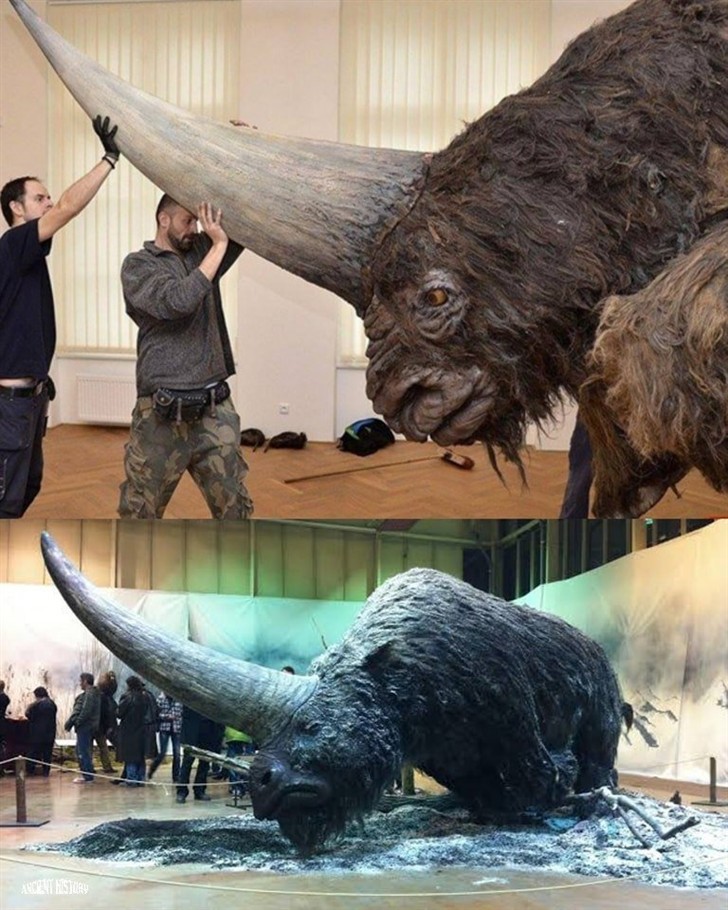Elasmotherium Sibiricum: The Woolly Giant of a Forgotten Epoch

Once roaming the frozen landscapes of what is now Russia and Central Asia, Elasmotherium sibiricum, also known as the Siberian unicorn, was a colossal rhinoceros that lived from the Late Pliocene to the Late Pleistocene epoch (roughly 3.6 million to 39,000 years ago). Cloaked in thick fur to protect against the brutal glacial winds, this megafauna was perfectly adapted to survive in the harsh environments of the Ice Age. With its iconic horn and impressive stature, Elasmotherium serves as a reminder of the giant creatures that once ruled the Earth during a period of profound climatic change.
The Woolly Giant: An Adaptation to the Ice Age

Elasmotherium sibiricum was a true giant of its time, resembling modern rhinos in many ways but far larger and more formidable. Growing up to 5 meters in length and weighing around 4 tons, it was built for endurance and survival in cold, icy environments. Its most iconic feature, the large horn that could reach lengths of up to 1.5 meters, likely served both as a weapon and a tool for defending its territory.
Covered in dense fur, the woolly giant was perfectly suited to life in the frigid climates of the Ice Age. Fossils of Elasmotherium show signs of being built to withstand glacial winds, with a sturdy frame and powerful limbs designed to travel long distances across the frozen landscapes in search of food. Unlike modern rhinos, which are typically found in warmer climates, Elasmotherium’s adaptations were a testament to the remarkable ability of nature to evolve and thrive in extreme conditions.
Fossils: A Glimpse Into a Lost Epoch
The discovery of Elasmotherium fossils provides rare insights into an ancient world dominated by megafauna—giant animals that roamed Earth long before humans emerged. These fossilized remains reveal valuable clues about the climate and ecosystems that supported such extraordinary creatures. By studying the bones, teeth, and horns of Elasmotherium, paleontologists can piece together the environmental conditions of the Ice Age, providing a better understanding of how megafauna survived and adapted to the rapid changes of the era.

One of the most striking aspects of Elasmotherium’s existence is its coexistence with other large species, such as mammoths and saber-toothed cats, in an ecosystem that was harsh and ever-changing. The presence of such enormous creatures suggests that the landscape was once much more temperate than it is today, providing a rich habitat for large herbivores like Elasmotherium.
The Resilience of Life and the Cycle of Extinction
Despite its adaptations, Elasmotherium sibiricum ultimately succumbed to the pressures of extinction around 39,000 years ago. While the exact cause of its disappearance is not fully understood, climate change at the end of the Pleistocene, along with human hunting pressures, may have played a significant role in its demise.
The extinction of Elasmotherium serves as a poignant reminder of nature’s ever-turning cycle. While this magnificent creature once thrived in the frozen steppes, its fossils now stand as silent witnesses to an era long past. The extinction of such megafauna marks the end of an epoch and the beginning of a new age dominated by a very different set of species. Yet, in the resilience of Elasmotherium, we are reminded that life, no matter how large or small, will continue to adapt and evolve in the face of environmental change.
Conclusion
The story of Elasmotherium sibiricum, the woolly giant of the Ice Age, is a testament to the incredible adaptations of ancient megafauna and the ever-changing nature of Earth’s ecosystems. With its imposing horn, dense fur, and powerful build, Elasmotherium was perfectly suited to life in a world dominated by ice, yet it was ultimately not immune to the forces of climate change and extinction. As we uncover more fossils of this remarkable creature, we are reminded of the resilience of life in the face of uncertainty and the ever-turning wheel of nature’s cycles.











